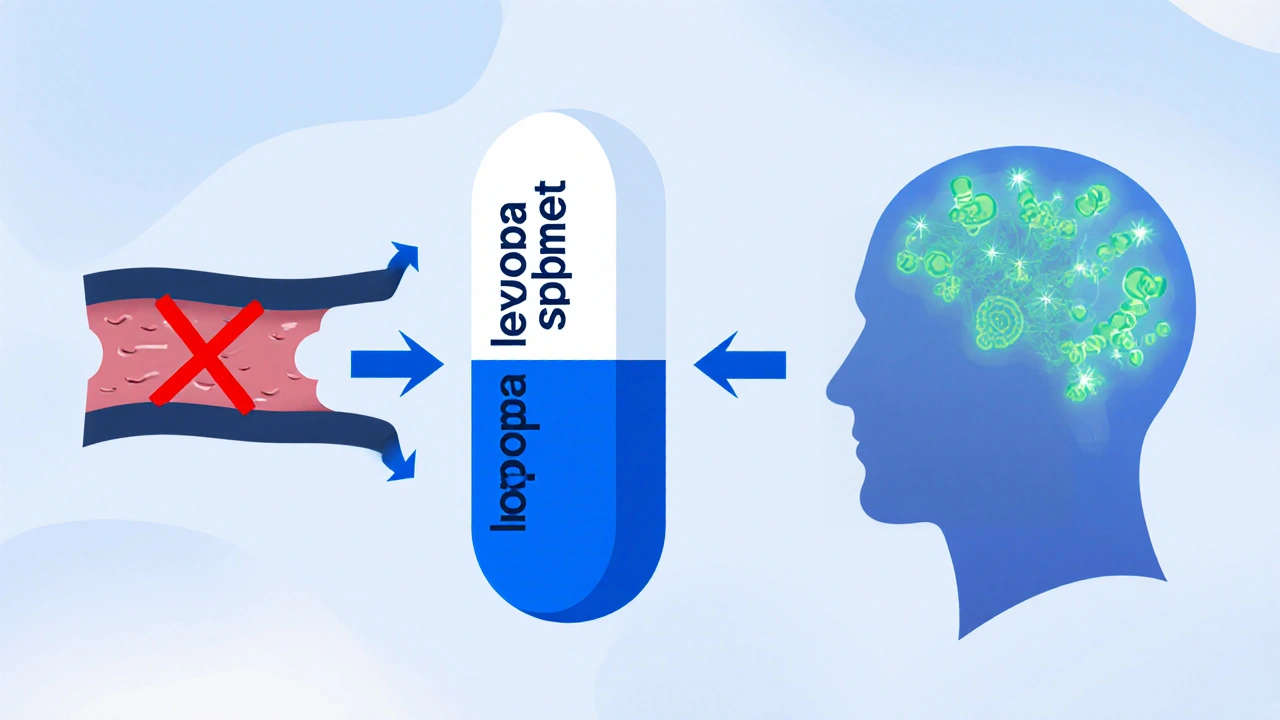Sinemet: What It Is, How It Works, and What You Need to Know
When you hear Sinemet, a combination medication used to treat Parkinson’s disease by replacing dopamine in the brain. Also known as carbidopa-levodopa, it’s one of the most prescribed treatments for movement problems caused by Parkinson’s. This isn’t just another pill—it’s a lifeline for millions who struggle with tremors, stiffness, and slow movement. Sinemet works by getting levodopa, the raw material for dopamine, past the blood-brain barrier, while carbidopa keeps it from breaking down too soon in the body. Without carbidopa, most of the levodopa would be wasted before it ever reached the brain.
Sinemet doesn’t cure Parkinson’s, but it helps people move better, speak clearer, and live more independently. It’s often the first drug doctors reach for after diagnosis, and many stay on it for years. But it’s not simple—dosing matters a lot. Too little and symptoms return; too much and you might get uncontrolled movements or nausea. That’s why finding the right balance takes time, patience, and close tracking with your doctor. People often wonder if other meds can replace it. The answer? Sometimes. But Sinemet remains the gold standard because nothing else delivers dopamine to the brain as directly or reliably.
Related to Sinemet are other dopamine-boosting drugs like levodopa, the active ingredient that becomes dopamine in the brain, and carbidopa, the helper drug that stops levodopa from being broken down too early. These two are rarely used alone—Sinemet is their combined form. Other Parkinson’s meds, like dopamine agonists or MAO-B inhibitors, work differently. They mimic dopamine or slow its breakdown, but they don’t replace it the way Sinemet does. That’s why many patients start on Sinemet and add others later as symptoms change.
Side effects are common but manageable. Nausea, dizziness, and low blood pressure happen early on. Some people get sudden sleep attacks or hallucinations, especially as the disease progresses. And over time, many notice the effects wearing off faster between doses—that’s called wearing-off. That’s when doctors adjust timing, add controlled-release versions, or try new combinations. It’s not a one-size-fits-all solution, but for most, it’s the most effective tool they have.
What you’ll find in the posts below are real, practical guides on how Sinemet fits into daily life. You’ll see how it interacts with other meds, what to watch for as time goes on, and how people manage its challenges. There’s no fluff here—just clear, tested advice from people who’ve lived with it and professionals who’ve treated it. Whether you’re just starting out or have been on Sinemet for years, you’ll find something that helps you take control.
A detailed comparison of Sinemet with other Parkinson's disease drugs, covering mechanisms, side effects, dosing, costs, and how to choose the right therapy.
Oct, 20 2025

